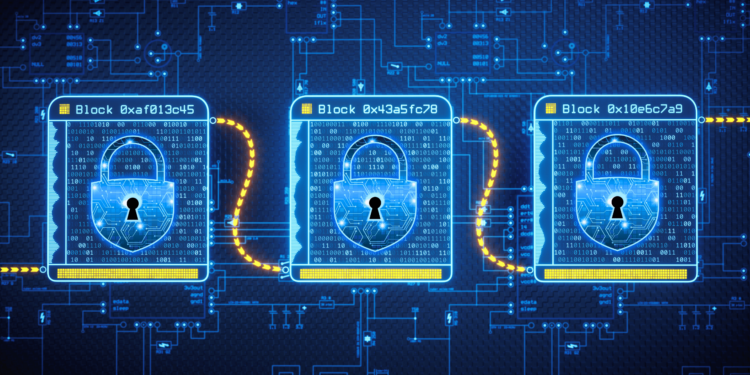In today’s digital age, where data breaches, fraud, and inefficiencies plague various sectors, blockchain technology emerges as a transformative solution. By offering a decentralized, immutable, and transparent system, blockchain is revolutionizing how transactions are conducted, ensuring enhanced security and trust across industries.
Understanding Blockchain Technology
At its core, blockchain is a distributed ledger technology that records transactions across multiple computers in a way that ensures the data cannot be altered retroactively without the alteration of all subsequent blocks and the consensus of the network. This structure inherently provides a high level of security and transparency.
Key features of blockchain include:
- Decentralization: Eliminates the need for a central authority, reducing single points of failure.
- Immutability: Once recorded, transactions cannot be changed, ensuring data integrity.
- Transparency: All participants can view the transaction history, promoting accountability.
- Consensus Mechanisms: Protocols like Proof of Work (PoW) and Proof of Stake (PoS) validate transactions, ensuring agreement across the network.
Enhancing Security Through Blockchain
1. Data Integrity and Tamper Resistance
Blockchain’s immutability ensures that once data is recorded, it cannot be altered without consensus from the network. This feature is particularly crucial in sectors like finance and healthcare, where data integrity is paramount. For instance, the California Department of Motor Vehicles (DMV) has digitized 42 million car titles using blockchain technology to combat fraud and ease the title transfer process.
2. Decentralized Validation
Traditional centralized systems are vulnerable to single points of failure and cyberattacks. Blockchain’s decentralized nature distributes data across a network of nodes, making it significantly harder for malicious actors to compromise the system. This distributed approach enhances the overall security posture of organizations adopting blockchain solutions.
3. Cryptographic Security
Blockchain employs advanced cryptographic techniques to secure data. Each transaction is encrypted and linked to the previous one, forming a chain that is resistant to tampering. This cryptographic security ensures that data remains confidential and protected from unauthorized access.
Promoting Transparency and Accountability
1. Auditable Transactions
Every transaction on a blockchain is recorded in a public ledger, accessible to all participants. This transparency allows for real-time auditing and traceability, reducing the likelihood of fraud and errors. For example, blockchain’s role in supply chain management enables stakeholders to trace the origin and journey of products, ensuring ethical sourcing and compliance.
2. Smart Contracts
Smart contracts are self-executing contracts with the terms of the agreement directly written into code. These contracts automatically enforce and execute terms when predefined conditions are met, reducing the need for intermediaries and enhancing trust between parties. This automation streamlines processes and minimizes human error.
3. Public Verification
Blockchain’s transparency allows for public verification of transactions, fostering trust among users. In sectors like voting and public records, this feature ensures that actions are visible and verifiable, promoting integrity and public confidence.
Real-World Applications of Blockchain
1. Financial Services
Blockchain is transforming the financial industry by enabling faster, more secure transactions. The London Stock Exchange Group (LSEG) has completed its first blockchain-powered fundraising transaction, marking a significant milestone in financial infrastructure. Additionally, Proof of Reserves (PoR) practices in cryptocurrency exchanges utilize blockchain to provide transparent auditing of reserves, ensuring that companies hold sufficient assets to cover customer deposits.
2. Supply Chain Management
Blockchain enhances supply chain transparency by providing a tamper-proof record of product journeys. This traceability helps in verifying the authenticity of goods, ensuring compliance with regulations, and reducing fraud. Companies can track products from origin to consumer, ensuring quality and ethical practices.
3. Healthcare
In healthcare, blockchain facilitates secure sharing of patient records among authorized professionals, ensuring data privacy and reducing administrative burdens. The immutable nature of blockchain ensures that patient histories are accurate and tamper-proof, leading to better patient outcomes and streamlined operations.
4. Voting Systems
Blockchain’s transparency and immutability make it an ideal solution for secure voting systems. By recording votes on a blockchain, the integrity of elections can be maintained, reducing the risk of fraud and ensuring that results are accurate and verifiable.
Challenges and Considerations
While blockchain offers numerous benefits, several challenges must be addressed:
- Scalability: As the number of transactions grows, the blockchain network must scale accordingly to maintain performance.
- Regulatory Compliance: Navigating the legal landscape surrounding blockchain technology can be complex, as regulations vary across jurisdictions.
- Energy Consumption: Some consensus mechanisms, like PoW, require significant computational power, leading to concerns about environmental impact.
- Integration with Legacy Systems: Incorporating blockchain into existing infrastructures can be challenging and may require substantial investment.
The Future of Blockchain
The potential of blockchain extends beyond its current applications. As technology evolves, blockchain could play a pivotal role in areas such as:
- Digital Identity Management: Providing individuals with control over their personal data and online identities.
- Internet of Things (IoT): Enabling secure and transparent communication between IoT devices.
- Artificial Intelligence (AI): Ensuring the ethical use of AI by providing transparent data trails.
The continuous development of blockchain technology promises to further enhance security and transparency across various sectors, driving innovation and fostering trust in digital interactions.
Conclusion
Blockchain technology stands at the forefront of a digital revolution, offering unprecedented levels of security and transparency. By decentralizing control, ensuring data integrity, and promoting accountability, blockchain is reshaping industries and setting new standards for trust in digital transactions. As adoption grows and challenges are addressed, blockchain’s impact will continue to expand, heralding a new era of secure and transparent digital interactions.
Latest Developments in Blockchain Technology
- LSEG’s Blockchain-Powered Fundraising: The London Stock Exchange Group has completed its first blockchain-powered fundraising transaction, marking a significant milestone in financial infrastructure.
- California DMV’s Blockchain Initiative: The California Department of Motor Vehicles has digitized 42 million car titles using blockchain technology to combat fraud and ease the title transfer process.
- USAID’s Blockchain Integration: The Trump administration plans to leverage blockchain technology to secure and trace aid distribution, purportedly to increase transparency, security, and efficiency.
These developments underscore the growing recognition of blockchain’s potential to enhance security and transparency across various sectors.
Join Us : Twitter | Website | GitHub | Telegram | Facebook | YouTube























